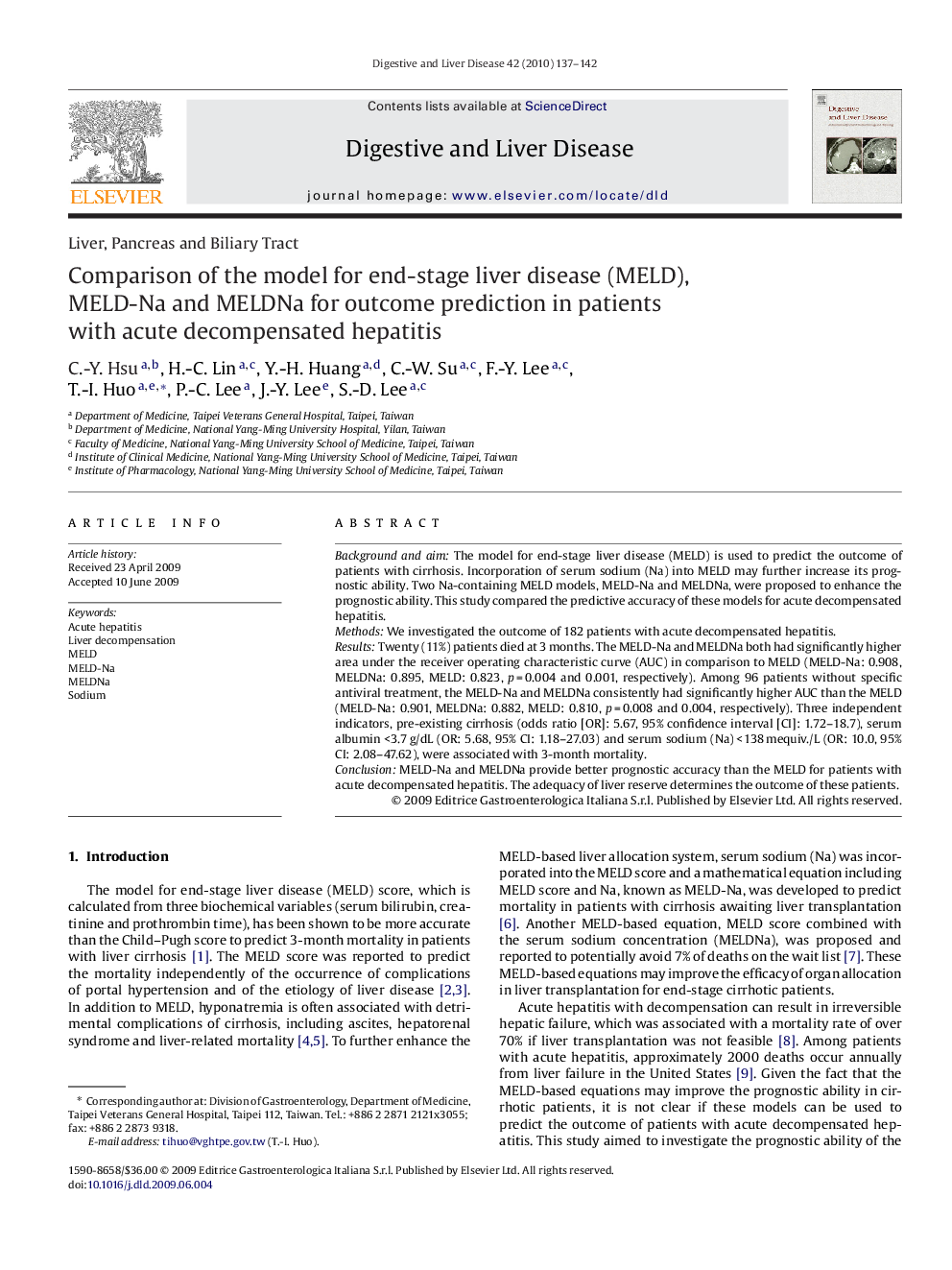| Article ID | Journal | Published Year | Pages | File Type |
|---|---|---|---|---|
| 3264333 | Digestive and Liver Disease | 2010 | 6 Pages |
Background and aimThe model for end-stage liver disease (MELD) is used to predict the outcome of patients with cirrhosis. Incorporation of serum sodium (Na) into MELD may further increase its prognostic ability. Two Na-containing MELD models, MELD-Na and MELDNa, were proposed to enhance the prognostic ability. This study compared the predictive accuracy of these models for acute decompensated hepatitis.MethodsWe investigated the outcome of 182 patients with acute decompensated hepatitis.ResultsTwenty (11%) patients died at 3 months. The MELD-Na and MELDNa both had significantly higher area under the receiver operating characteristic curve (AUC) in comparison to MELD (MELD-Na: 0.908, MELDNa: 0.895, MELD: 0.823, p = 0.004 and 0.001, respectively). Among 96 patients without specific antiviral treatment, the MELD-Na and MELDNa consistently had significantly higher AUC than the MELD (MELD-Na: 0.901, MELDNa: 0.882, MELD: 0.810, p = 0.008 and 0.004, respectively). Three independent indicators, pre-existing cirrhosis (odds ratio [OR]: 5.67, 95% confidence interval [CI]: 1.72–18.7), serum albumin <3.7 g/dL (OR: 5.68, 95% CI: 1.18–27.03) and serum sodium (Na) < 138 mequiv./L (OR: 10.0, 95% CI: 2.08–47.62), were associated with 3-month mortality.ConclusionMELD-Na and MELDNa provide better prognostic accuracy than the MELD for patients with acute decompensated hepatitis. The adequacy of liver reserve determines the outcome of these patients.
